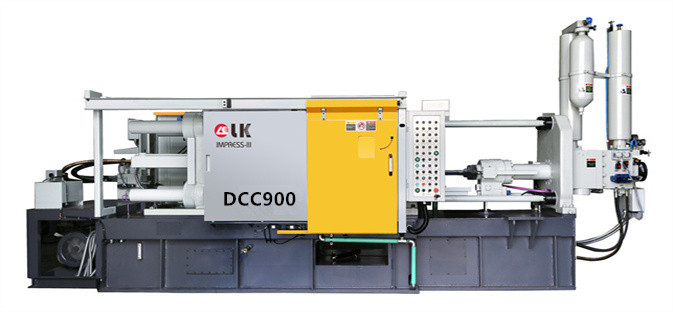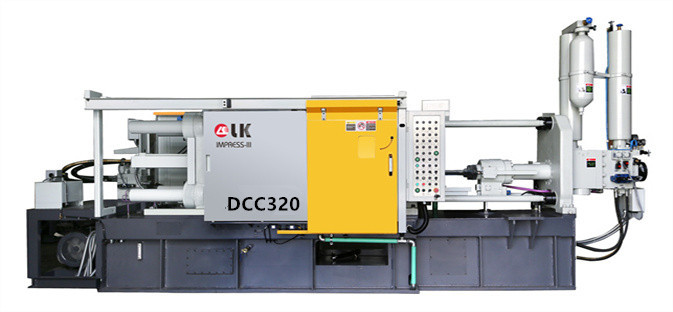How to Make a Die-Casting Mold
LK Die Casting Machine / 2024-07-05 15:42:05
Introduction
Die-casting molds occupy an important position in modern manufacturing.
They are used to manufacture various metal parts and are widely used in the automotive, aviation, electronics, and other industries.
Knowing how to make die-casting molds can not only improve production efficiency but also ensure product quality.
This article will introduce the production process of die-casting molds in detail to help readers quickly master relevant knowledge.
Basic process of die-casting mold production
The production process of die-casting molds is complicated and requires multiple steps, mainly including design, material selection, processing, assembly and
testing.

The following is a detailed production process:
1. Mold design
Mold design is the first and most critical step in making die-casting molds. The quality of the design directly affects the performance and service life of the mold.
Requirement analysis: clarify the function, size, tolerance, and material requirements of the die-casting parts.
CAD design: Use computer-aided design (CAD) software to draw 3D models and 2D drawings of the mold.
CAE simulation: Use computer-aided engineering (CAE) software to perform mold flow analysis, optimize the design, and reduce defects.
2. Material selection
Select appropriate mold materials according to the use environment of the mold and the requirements of the die-casting parts. Common mold materials are:
Tool steel (such as H13, SKD61): high strength, wear resistance, high-temperature resistance.
Hot work mold steel (such as H11, H21): suitable for high-temperature working environments.
Aluminum alloy and copper alloy: used in specific application scenarios, with good thermal conductivity and corrosion resistance.
3. Mold processing
Mold processing is the process of converting design drawings into actual molds, including rough processing, fine processing and heat treatment.
Rough processing: Use CNC machine tools (CNC) for preliminary processing to remove excess materials and form the basic shape of the mold.
Fine processing: Use high-precision machine tools for fine processing to ensure the dimensional accuracy and surface quality of the mold.
Heat treatment: Quench and temper the mold to improve its hardness and toughness.
4. Mold assembly
After the mold processing is completed, it needs to be assembled. During the assembly process, pay attention to the matching accuracy and installation order of
each component.
Component assembly: Assemble the various components of the mold according to the design drawings.
Match adjustment: Adjust the matching of each part of the mold to ensure the closure and operation flexibility of the mold.
Cooling system installation: Install cooling water channels or cooling oil channels to ensure that the mold can effectively dissipate heat during use.
5. Mold testing
After the mold is assembled, it needs to be tested to ensure that it meets the design requirements.
Mold trial: Perform a mold trial on the die-casting machine to observe the quality of the die-casting and the working status of the mold.
Defect analysis: Analyze the defects that occur during the mold trial, such as pores, shrinkage holes, deformation, etc., find out the causes and correct them.
Adjustment and optimization: According to the mold trial results, adjust and optimize the mold to ensure that it can normally produce high-quality die-castings.

Key technologies for making die-casting molds
In the process of making die-casting molds, mastering some key technologies can greatly improve the quality and production efficiency of the mold.
1. CNC machining technology
CNC machining technology (CNC) is the core technology of modern mold processing, with the characteristics of high precision, high efficiency and high flexibility.
By programming and controlling the machine tool, complex mold structures can be accurately processed to ensure the dimensional accuracy and surface quality of the
mold.
2. Heat treatment technology
Heat treatment technology is an important means to improve the performance of mold materials.
Common heat treatment methods include quenching, tempering, nitriding, etc.
Through heat treatment, the hardness, wear resistance, and toughness of the mold can be improved, and the service life of the mold can be extended.
3. Surface treatment technology
Surface treatment technology can improve the surface properties of the mold. Common methods include chrome plating, nickel plating, nitriding, carbonitriding, etc.
Through surface treatment, the wear resistance, corrosion resistance, and oxidation resistance of the mold can be improved, and the maintenance and replacement
frequency of the mold can be reduced.
4. Mold flow analysis technology
Mold flow analysis technology simulates the die-casting process through computer simulation to predict the quality of die castings and the working state of
the mold.
Through mold flow analysis, the mold design can be optimized, defects can be reduced, and production efficiency and product quality can be improved.
Precautions for making die-casting molds
In the process of making die-casting molds, the following points need to be noted:
Material quality: Select high-quality mold materials to ensure their stable performance and avoid affecting the mold life and product quality due to material quality problems.
Processing accuracy: Control the processing accuracy to ensure that the dimensional tolerance and surface quality of the mold meet the design requirements.
Heat treatment specifications: Strictly follow the heat treatment process specifications to avoid mold deformation or performance degradation due to improper heat
treatment.
Assembly accuracy: Ensure the assembly accuracy of each component of the mold to avoid affecting the working performance of the mold due to assembly problems.
Regular maintenance: Regularly maintain and service the mold to promptly discover and solve problems and extend the service life of the mold.
Conclusion
Making die-casting molds is a complex and delicate job that requires multiple steps such as design, material selection, processing, assembly, and testing.
By mastering key technologies such as CNC machining, heat treatment, surface treatment, and mold flow analysis, the quality and production efficiency of the mold
can be greatly improved.
In actual operation, paying attention to issues such as material quality, processing accuracy, heat treatment specifications, and assembly accuracy can ensure
the production of high-quality die-casting molds to meet the needs of modern manufacturing.
In the future, with the continuous advancement of science and technology, the production technology of die-casting molds will be more refined and intelligent,
bringing more innovation and development to the manufacturing industry.
Contact LK Egypt to learn more info about the die-casting machine
LKAGENT OFFICE DCM
Address: Industry Zone, South of Port Said Kebly, Egypt
https://www.zazdiecasting.com/
Phone: +86 13598704163
Mobile: +20 101 304 3317 +20 150 181 8310
Email: jack@zazmae.com ahmedmahmoud@zazmae.com
#die cast tooling
#trivalent chromate
#rapid prototype casting
#a360 aluminum
#aluminum caster
#aluminum prototype
#ideal 55 slider parts
#density of aluminum kg/mm3
#magnesium sheet metal
#parts of a metal gate
#subcontracting of screw machining for the luxury sector
#wall aluminum
#die casting tooling
#tooling for die casting
#density of aluminium in kg mm3
#clear chromate
#es casting metals
#gating material
#prototype aluminum
#sigma castings
#subcontracting of screw-machining for household appliances
#we squeeze to please machine
#aluminium gravity die casting
#aluminum part
#aluminum rapid prototyping
#nickel casting
#plunger tip for die casting machine
#rapid prototyping aluminium
OTHER CONTENT
-

2024-09-19 14:16:15 LK Cold Chamber Die Casting Machine DCC900 Locking Force: 9000KN Die Height: 400-1000mm Space Between Tie Bars: 930x930mm Shot Weight: 13.5Kg Casting Area Max:2250c㎡
More -

2024-09-19 14:11:06 LK Cold Chamber Die Casting Machine DCC280 Locking Force: 2800KN Die Height: 250-650mm Space Between Tie Bars: 560x560mm Shot Weight: 2.9Kg Casting Area Max:700c㎡
More -

2024-09-19 10:23:07 LK Cold Chamber Die Casting Machine DCC580 Locking Force: 5000KN Die Heigh: 350-850mm Space Between Tie Bars: 760x760mm Shot Weight: 6.9Kg Casting Area Max:1250c㎡
More -

2024-09-19 10:11:20 LK Cold Chamber Die Casting Machine DCC400 Locking Force: 4000KN Die Height: 300-700mm Space Between Tie Bars: 669x669mm Shot Weight: 4.7Kg Casting Area Max:1000c㎡
More

